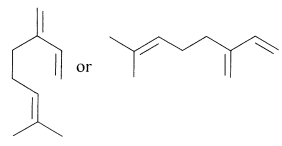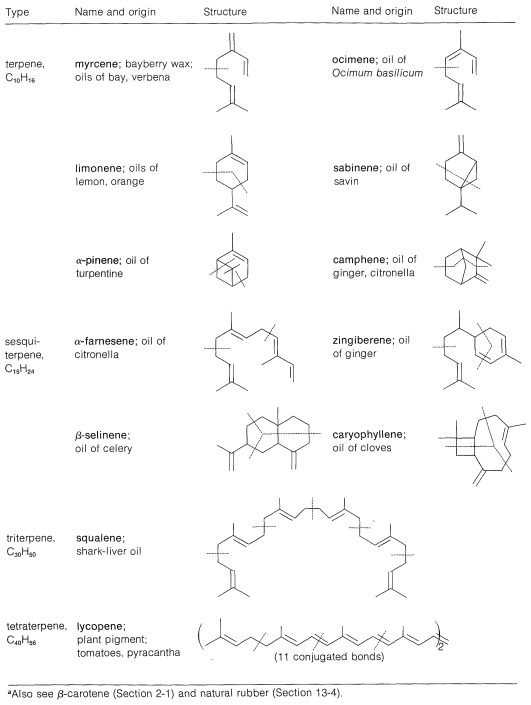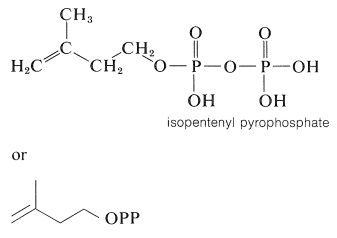Terpene Hydrocarbons
A wide variety of cyclic terpene hydrocarbons are known and, as multiples of C5H8C5H8, these have fewer double bonds than the open-chain terpenes. Because it is time consuming to show all the carbon and hydrogen atoms of such substances, the structures often are drawn in a convenient shorthand notation wherein the carbon-carbon bonds are represented by lines, carbon atoms being understood at the junctions or the ends of lines. By this notation, myrcene can be represented by formulas such as the following:

The left semicyclic structural formula is useful to show relationships with the open-chain (acyclic) and cyclic terpene hydrocarbons.
Table 30-1: Some Isoprenoid Hydrocarbonsaa

A number of terpene hydrocarbons are shown in Table 30-1. The designation "terpene" is by custom specifically reserved for the C10C10 compounds, the C15C15 compounds being known as sesquiterpenes, the C20C20 as diterpenes, C30C30 as triterpenes, and so on. It should be apparent from Table 30-1 that the C10C10 and C15C15 compounds, which are the important components of essential oils, in reality are members of a much larger class of substances with carbon skeletons made up of isoprene units and occurring in both plants and animals. It is common to refer to all members of the group as isoprenoid compounds. The so-called isoprene rule, which correlates the structures of these substances, speaks for their synthesis in living systems from some common precursor with five carbon atoms. We can characterize the isoprenoid compounds as being biogenetically related. Isoprene itself does not occur naturally and appears to play no part in biosynthesis. The actual five-carbon intermediate appears to be isopentenyl pyrophosphate, and the role of this substance in biosynthesis will be discussed later:



